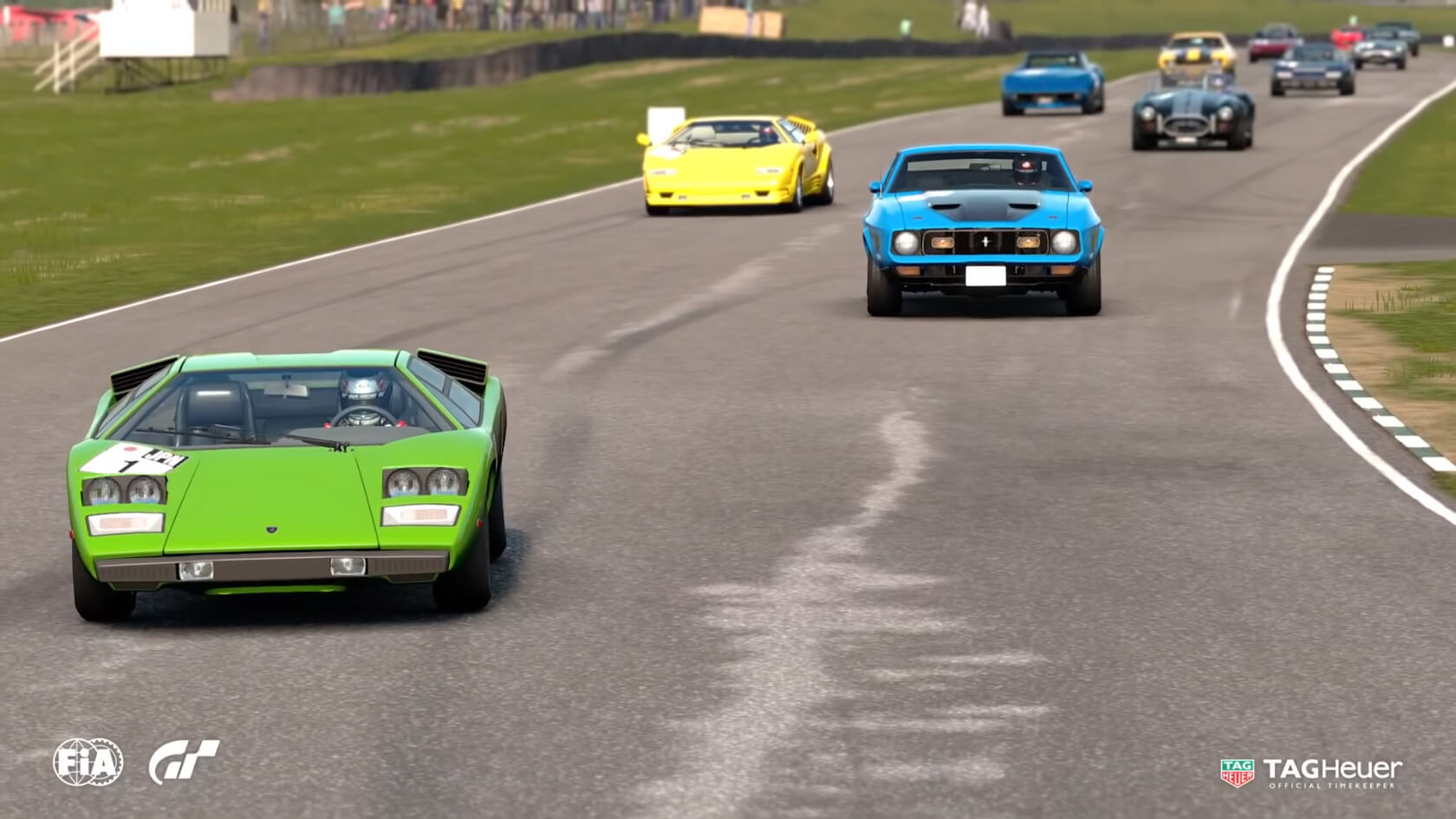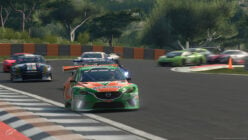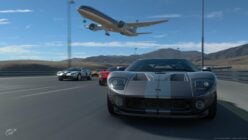We’re all coming down from the excitement of the most recent GT Sport World Tour events. Watching both finals come down to last-corner decision was pretty heart-stopping stuff, and top quality entertainment of the kind that the same weekend’s French Grand Prix resoundingly failed to deliver.
However, like the F1, complaints from competitors and viewers about stewarding in the FIA Gran Turismo Championship reached new heights during the event. It’s a week since all the action so now, with a little time to reflect on what happened, we’re looking at why this is the case.
The drivers at the World Tour events are among the best in the world, but even they are prone to occasional mistakes. If they’re lucky, the mistakes are theirs alone, but sometimes they involve other drivers. At that point the stewards get involved, judging if any driver should receive a sanction for the incident and the magnitude of it.
Although one should never take YouTube comments too seriously, you’d only have to look at the live reactions on the weekend’s streams to see that viewers’ thoughts on the event stewarding are not favorable. The drivers, it seems, are no more convinced — at one point during the stream, the commentators were almost drowned out by one driver voicing his disagreement with a penalty, while still racing.
Three incidents over the weekend attracted the largest penalties issued by the stewards that we have ever seen: a five-second time penalty. These occurred in the Manufacturer Series third race, the Manufacturer Series final race, and the Nations Cup final.
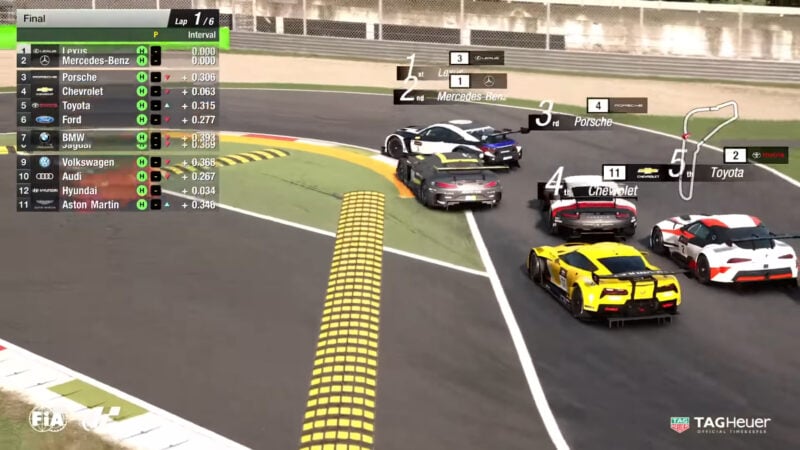
The first two of these incidents seem pretty clear-cut. At Monza the Williams Mercedes appeared to simply drive into the Bruzzi Lexus’s rear quarter at the first chicane, and spin it about. This had a dramatic effect on the race and the series, with the back-to-back race-winning Lexus dropped to last on the road at the time — while the Mercedes scampered off into the distance, clear of the mayhem behind it. On consequences alone it deserved the sternest penalty the stewards could give for a standalone, even if clearly unintentional, incident.
Joining it on the very definitely naughty step was an incident from the Nurburgring. What seemed to be an error by the Porsche driver, De Jesus, allowed Mendoza’s Aston Martin alongside it to the outside, but the 911 continued on its normal racing line and essentially ran the Vantage off the road and into the barriers — followed by a spin to add injury to insult. Although there’s no suggestion that this was a cynical, Schumacher-style attempt to crowd a rival off the race track, it too merits stiff punishment.

However the third incident is a little less obvious. On the face of it, the driver punished, Latkovski, seemed to drive straight into the back of Lopez at the slowest corner on the track — and last corner of the race and championship — and spear him into the barrier. Open and shut, surely, but there are other factors at play.
Firstly Lopez was on two-grades slower tires and was tip-toeing around the corners; there had been an incident one corner before that caused Latkovski to slide across the track as he too was hit from behind by Fraga (for a one-second penalty). Add into that the fact that Lopez was conserving fuel — he actually ran out before the finish line, although digging himself out of the grass might have contributed to that — and been even more unexpectedly slow and you have a reasonable defense. Tipping the scales the other way is form; Latkovski was also the driver involved in the steward-investigated last corner scuffle in the Manufacturer Series the previous day…
Ultimately, all three seem quite justified — even if some were calling for Polyphony Digital to withdraw the last two drivers’ eligibility for the World Tour in the future. We can certainly see a case for a sterner punishment than five seconds for serious incidents like these, and the stewards can give penalties of up to 99 seconds. However, it was the penalties not given that raise eyebrows more than those that were.

Take the Nations Cup semi-final B, for example. In that race what seemed to be an error by the Countach driver, Sugawara, allowed the Brooks Corvette alongside it to the inside, but the Lamborghini continued on its normal racing line and essentially ran the Chevrolet off the road and into the barriers — followed by a spin to add injury to insult. If that seems like a copy-paste from an early paragraph, that’s because it is, but the stewards declared it to be a racing incident this time and gave no penalties. The consequences were far more severe too — both drivers lost a qualifying spot for the final as a result of the collision.
That put Brooks into the repechage race where he was, in a truly strange incident, taken out completely with the checkered flag almost in sight. It was in essence a complete mistake from the following driver, Rubilar, who seemed to miss his braking spot. Taking evasive action to the inside of the corner rather than the outside, he speared into his colleague and knocked him out of a qualification spot for the second time in two races.

This doesn’t seem so strange, but there are two further things to consider. First, Rubilar had already qualified for the World Finals by way of winning the event in Paris, which poses a question of why he was there in any case, but also he received only a warning for the collision.
Moreover, another driver, Hizal, had made exactly the same mistake on lap one of the same race and hit other drivers. In contrast to Rubilar’s wrist-slap, Hizal got a three-second time penalty for that incident. Some onlookers noted that Rubilar waited for Brooks to let him back past, avoiding a penalty for this sporting action, but Hizal let the entire field past after his error and still got a penalty.
Brooks, despite being railroaded out of automatic qualification twice, seemed understanding about it on our forums, but reported a pretty unpleasant aftertaste. After the repechage destruction and with half a lap and no hope left, he essentially gave up the chase and beached his GT86. This, he said, brought a warning from stewards about his conduct and his eligibility for future events.
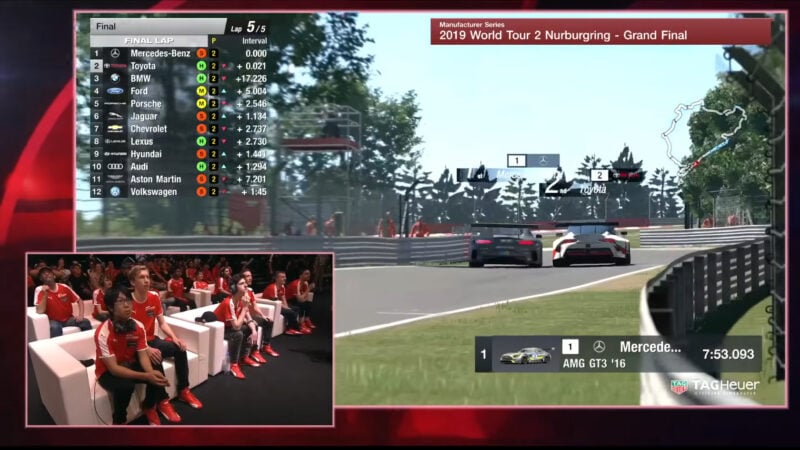
The ‘Ring event was far from the first time we’ve seen apparently inconsistent stewarding, mainly on the side of penalties not given. It’s not something that’s escaped the drivers either, as it’s a subject that comes up often in their WhatsApp group — they really are a tight-knit family! The comments from there are unsurprising.
“I have no confidence in the stewarding. It was fine in Austria last year but has gone downhill since,” says one World Tour finalist. “It really upsets me how there is no semblance of consistency,” says another. Driver after driver remarks on the consistency of penalties as “disappointing”, “weird”, and “embarrassing”. Some feel so strongly about it that, despite the otherwise incredible experience, they’re declining to take part any further.

One thing we need to bear in mind though is that neither the viewers nor the drivers have access to the car telemetry available to the stewards. While it can be difficult to see how they can penalize what we might see as the wrong car — such as at the Manufacturer Series race at Sardegna, when Mendoza’s Aston Martin got a penalty for the contact with Grady’s Audi TT despite appearing to get a shove from the Corvette — we have to concede that we can’t see what the stewards see.
That said, it also seems that there’s occasions where they can’t see what the drivers can. At the semi-final stage in two successive events, a driver has appeared to fall victim to a last-lap, last-gasp dive bomb that’s knocked them from a repechage spot in 10th to elimination in 11th. These weren’t shown on screen either, but those of us with line of sight to the drivers’ own rigs (or with one eye on the timing screens) could spot them pretty easily. As each was a participation-ending event, they’re at least as important as the winner, or top four, but there’s no sign the incidents were even investigated.

It certainly appears that there’s room for improvement. As the drivers note, there has been a relaxation of stewarding standards over the past few events and it’s in danger of feeding into a deterioration of driving standards. The best drivers will always seek to exploit the edges of what’s allowed. Derisory penalties — or none at all — for incidents that end races, or make a late change to the qualification list, will encourage some drivers to take those risks. As more established drivers decline their places, their newcomer replacements — with only what they’ve seen others get away with on-screen to go by — may only make things worse.
However, we must also be wary of the danger of becoming too officious. The GT Sport live events are great entertainment and move like a well-oiled machine. You could sense the tension caused by the delays for the steward investigations after both finals last weekend, as everything paused. Long delays caused by these deliberations detracts from the spectacle, and if we’ve learned nothing else from F1 over the years it’s that the audience likes to see things decided on the track rather than an office three hours later.

What’s the solution then? For a start, the stewards need to start flexing their muscles. They’re able to give out penalties of up to 99 seconds, but for some reason seem to have an unspoken five-second cap. Many of the incidents we’ve seen above have cost the innocent party 10-15 seconds of race time, and the punishment really does need to fit the crime. The math is easy knowing you can take out an opponent who’ll lose 10s on the road as a result, but you won’t lose more than five.
Perhaps a more rigid penalty matrix would suit, with preset punishments for certain actions, which is made widely available to viewers as part of the race information. Each driver could have their own dedicated observer during the race and they could flag any incident to a stewarding team with their opinion on their driver’s culpability. The stewards could then issue penalties, as informed by someone who watched the incident live from the driver’s point of view, with discretionary powers to increase and decrease the punishment.
A driver appeal system could support this. If each driver has a single, immediate post-race appeal against a decision permitted across the whole event — currently they don’t, as all decisions are final — they could get the observers and stewards to look again. This shouldn’t hold up the action, and the viewers would be kept informed; it could even enhance the broadcast as the commentators review the precise incident’s footage. Supplementing this with unbroadcast angles available to stewards — such as the onboard views with input telemetry — would add a further dimension and help explain the decisions.
No system will ever be perfect, but the audience and participants alike crave consistency. The lack of it detracts from the entertainment that these events otherwise capably deliver.
See more articles on World Tour.

